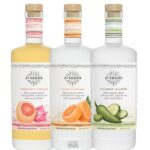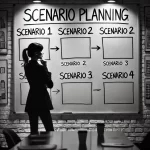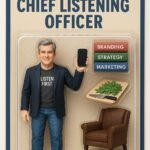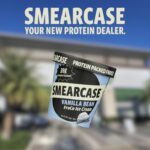During a recent conversation, I had the privilege of discussing marketing, innovation, and successful activations with a highly accomplished CMO from a billion-dollar beverage company. This individual, who had previously held executive positions at renowned culture-focused brands, was a true industry leader. Given my 15 years of experience in wine marketing, our discussion naturally gravitated towards the wine industry and wine lovers. This brilliant, tapped-in, culture- and consumer-obsessed leader said to me,
“What exactly are some examples of marketing in the wine industry? Good, great, whatever. I notice spirits marketing, beer marketing, and lots of beverages—I can’t think of a single wine marketing example.”
I was stunned. This isn’t the first time a sentiment like this has taken me aback in my career. Years ago, I told a professional in the CBD business that I was leading innovation for the world’s biggest winery, and he laughed and said, “wine innovation? What’s that?”
It’s a matter of concern for all of us who are passionate about the wine industry. As a wine marketer, I took this personally. However, it’s not just about personal feelings. It’s about the future of our industry. It’s disheartening to see our peers in adjacent industries not recognizing and valuing the marketing and innovation efforts that are so crucial to our industry’s success. It’s high time our work gets the recognition it truly deserves.
Driving Growth
Marketing is the process of promoting your product and driving top-line revenue.
If an industry or a brand does not have a strong revenue generation arm and a track record for giving the consumer newness before their attention starts to wane with the old, it is no wonder that wine has been losing share to other alcoholic and non-alcoholic beverages. However, this is not a permanent state. The wine industry, with its rich history and untapped potential for growth, can reclaim its position with the right marketing strategies and innovative approaches.
It does not need to be this way.
Wine is a beverage and an agricultural product at its core. It is not mythical or untouchable. We have the power to demystify wine, to make it more accessible and less intimidating.
I was recently told to watch a program on Apple TV called “Drops of God,” a Japanese drama about a famous wine critic’s daughter, who must compete against the father’s top student to identify extraordinary wines to inherit the collection. Many I have spoken to in the industry highly recommend it. Still, I was turned off by the almost sacred status to which we sometimes elevate this beverage—no wonder the public is confused and intimidated enough to choose something else. Let’s change that.
Five Key Steps for Marketing Wine Brands for Wine Lovers
Big or small, wine or cereal brands need certain things to drive growth.
- Awareness of and availability of the brand. A brand needs to be available where potential consumers are. Whether that’s having a DTC presence in a population center if your winery is on the other side of the state or doing what it takes to reach them in their native digital environments, that’s where it starts. It sounds like a no-brainer, but more wineries seem to be missing this than doing it. Once that physical availability is there, brands need to introduce themselves in an authentic, appealing way, as you would at a cocktail party. Relationships start slowly – you don’t marry on the first meeting. A substantial social media presence with a website that is the incarnation of your brand and built with the consumer at the forefront, an optimized user experience, and an inviting interface are table stakes. The website should be optimized for search so people can find you in the proverbial crowd of the cocktail party.
- Awareness of the offering and reason why they should care—don’t leave it up to them to figure out why they should care who you are. Once you’ve introduced yourself and the consumer knows where you are, you need to have something interesting to say and say it in a way that your new friend will find noteworthy and worth remembering. Remember when you met someone who later became your partner or spouse? You had to do the same thing then and probably stumbled at first. In the case of a brand, you are under the added pressure of having about 4 seconds to capture that person’s attention, being that they are surrounded by other brands shouting their name. If you don’t know your story cold, have optimized it knowing what your consumer needs or wants or finds attractive, and know how to grab their attention lightning fast, you’ve likely lost them. You are optimizing the story across the many touchpoints (you wouldn’t say the same to them in the library as you would at a concert).
- Many touchpoints and reminders—how often do you buy a brand or join a subscription the first time you become aware of it? Very few. On average, consumers need to be reminded seven times before they take the action you’re asking them to take. They may intend to but then get distracted. They may be interested but have to think about it. Your message might have tickled a part of their brain, but not enough to do anything about it. Consistency is the key. Keep talking to them. Keep iterating on ways to convey what you stand for and why they should care. What’s in it for them? Do you know them well enough to know how to appeal to them? Even if your message is perfect, breaking through to an action will take time. It would be best to plan for this and not give up without consistency. Keep iterating on your message, vehicle, and format, and do more of what seems to get a response.
- An easy action they can take – given that we are all consumers, we should be able to put ourselves in our (potential)/consumer’s shoes and walk through our brand’s consumer journey. If you can’t, have a friend or someone who resembles your target consumer do it. It is hard to believe many brands are doing this, given the clunky experiences that many have out there. The first question to ask in any piece of communication is, are you being very clear with the bite-size action you want them to take and making it crystal clear how to do it? I see so many communication pieces that don’t tell you the time of the event, how to sign up, where it’s at, how to join a webinar, or generally put it in the consumer’s court to figure out how to further the relationship. People may click a link if it’s there. They get irritated at this point if the phone number or email posted is not hyperlinked. Don’t ask for marriage. Ask for the first bite-sized action that will further them toward a relationship and purchase.
- Nurturing that relationship—once they’ve taken action with you, keep it interesting. When you start a relationship, you usually want to learn more about them and do exciting things together. Provide the consumer with value. Offer them utility or entertainment. Don’t just ask for the next sale every time you talk. Create a world that your target consumer wants to be part of. To do this, you must know them and yourself very well. It is be best to have a specific target consumer, not a broad swath of the population. As opposite as it may sound, a very targeted messaging approach will appeal even to those outside of that target more than a vanilla message meant to appeal to everyone will. People take notice of brands that say something exciting and speak their language. When you ask for the next step in the sales relationship, they will be more likely to take it if you’ve given them something of value and they find your world interesting.
Marketing is Psychology for Wine Lovers
Marketing is psychology and requires a deep understanding of yourself/brand and your consumer. Wine brands need to be able to be part of their consumers’ lives just as much as their moisturizer cream does to be chosen in today’s cluttered environment.
Knowing your consumers, building relationships with them, and knowing how to dance with them is how successful brands are built for the long term. This eventually brings pricing power and resilience to the marketplace.
This is a guest post by Courtney O’Brien.

Courtney is an experienced marketing leader, with 22 years of experience building and leading brands for top global corporations, including Evian (Danone), Coca-Cola and E&J Gallo Winery.
She is most proud of launching and growing Coke Zero from launch to a $1B brand in the US, creating and launching Apothic Red wine, which became the #1 red wine above $10 in the US within two years, and renovating and relaunching category-leading wine brands that resulted in 30 point trend shifts in performance.
Her specialties include brand strategy and positioning, customer segmentation, consumer insights and market research, digital marketing strategy, communications strategy, strategic planning, media strategy, and creative campaign strategy. She has recently launched The Outlier Initiative, a branding consultancy to help small brands break through category convention.
You can reach her at courtney@theoutlierinitiative.com or https://www.linkedin.com/in/courtney-obrien/
Photo by Szabo Viktor on Unsplash
Connect with Jeff at The Marketing Sage Consultancy. Interested in setting up a call with me? Use my calendly to schedule a time to talk. The call is free, and we can discuss your brand and marketing needs. If you want to learn more about my new offering, The Trusted Advisor Board, you can click here to learn the details. Feel free to email me at jeffslater@themarketing sage.com or text 919 720 0995. Thanks for your interest in working with The Marketing Sage Consultancy.





